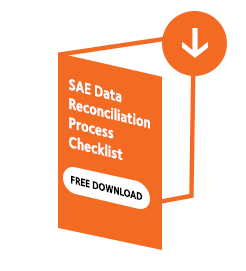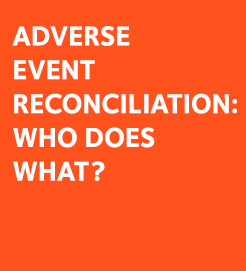SAE data reconciliation is routinely performed by most companies sponsoring or conducting clinical trials, but is it always done in the right way and in the right time? There is a number of misconceptions that may lead a clinical team to neglect or postpone this important step with potentially serious consequences on the timing and quality of the study data. Here are five of these misconceptions to avoid at all costs:
Misconception 1: SAE data in the safety and the clinical databases come from the same source so they are identical
While patient records are unique for each individual study subject, serious adverse event (SAE) data are collected in a very different way during the safety and clinical processes. Clinical data are recorded in the case report forms (CRF) and source document verification (SDV) is performed by a dedicated monitor on each value, generally by an on-site visit and visual inspection of the patient records. Furthermore, automated checks are performed programmatically to ensure consistency between different data for the same subject. This can take time but results in very high quality of data. On the other hand, safety information regarding SAE must be collected and transmitted to the sponsor and health authorities within well defined, stringent timelines. It therefore follows a different process that includes a narrative description by a physician who can be different from the principal investigator (PI) with little knowledge of the clinical study. As a result, the rate of discrepant data between the two databases can be high.
Misconception 2: Reconciliation of SAE data is not important because pharmacovigilance is a living process
The safety profile of a drug is indeed followed-up and updated even after market release. New information is added continuously and regular updates are reported to health authorities, sometimes resulting in changes in the product information sheet. However, the initial safety profile used for registration is based on the results of the clinical trials and must be supported by consistent data. Any discrepancies between the safety database and the safety profile based on the clinical data could result in a refusal from the health authorities to grant a marketing authorization.
Misconception 3: Reconciliation of SAE data can easily be done at the end of the study
Small studies with few adverse events (AE) can indeed be reconciled at the end with little or no impact on timelines. Furthermore, smaller studies occur at the early stages of development and are rarely on the critical path to submission for marketing of a drug. However, when it comes to larger, late-stage trials such as Phase III, waiting for the end of the study to look into data discrepancies can result in huge workload that competes with study closure procedures, generate a large number of last-minute queries and requests for correction to the investigational sites and at the end, most certainly delay the database lock and reporting of the study, which in turn affects submission and ultimately go-to-market process.
Misconception 4: It is better to wait until all data is collected before reconciling the safety and clinical databases
Reconciling two databases while data are still being recorded and modified may seem like a waste of time and energy. Why not wait until all data is collected and verified before comparing the two databases? This misconception is probably the most misleading one of all and needs some additional explanation. Performing SAE data reconciliation on an ongoing basis, does expose to the risk of data changes that may create discrepancies where the data initially matched or, inversely, resolve discrepancies that were due to initially erroneous data. Therefore, in order to make such process efficient, one needs to have a way to continuously monitor for changes on either side. Fortunately, software platforms such as eReconciliation® incorporate this functionality making it easy to detect changes, even if these are recurrent or consecutive, and alert the study team, saving valuable time and energy and making it easy to process safety data all along the study.
Misconception 5: SAE data reconciliation is the job of data managers alone
SAE data reconciliation is about data so why not leave it to data managers to resolve? This misconception is frequent and ultimately dangerous for the quality of study data. When comparing SAE data between the two databases, the study team must take a number of decisions, some of which may be simple numerical corrections but most have to be connected with the overall profile of each patient with input from drug safety and medical at a minimum. Other functions possibly concerned are regulatory and biostatistics. Furthermore, while some data must definitely be identical at the end of the reconciliation process, other may have a level of tolerance for differences that are deemed acceptable or negligible. The decision to accept such discrepancies can only be taken by the study team with input from various functions.
DOWNLOAD NOW THE FREE SAE RECONCILIATION HANDBOOK
The Manual / Reference Book with all the topics related to the Safety Data Reconciliation Management.







